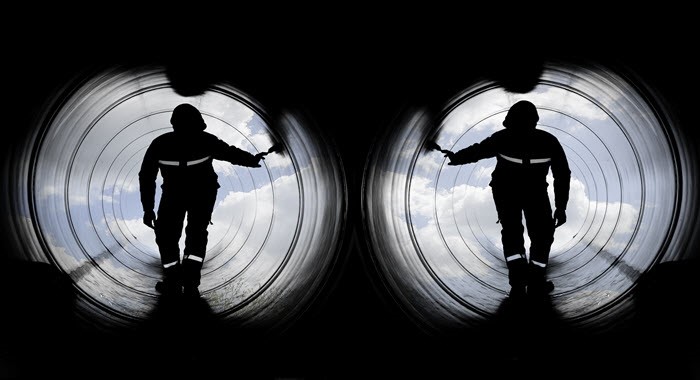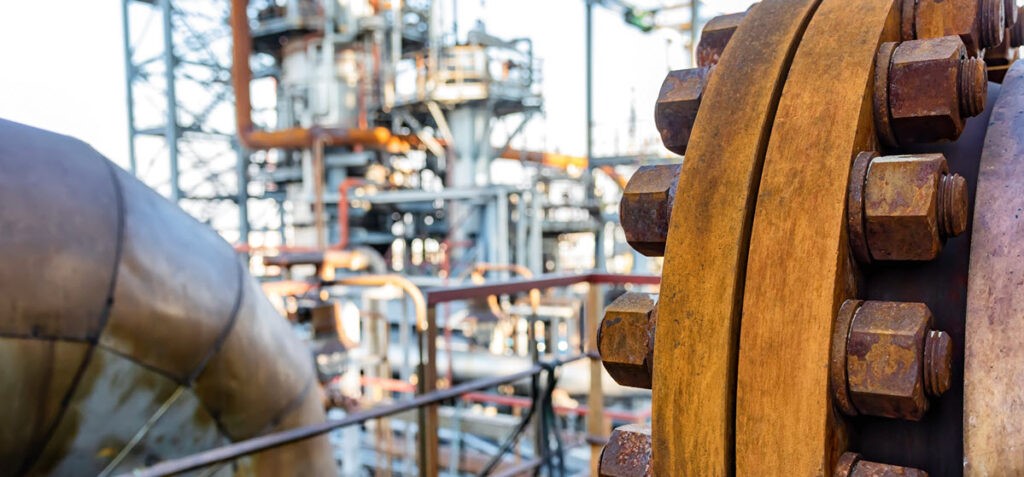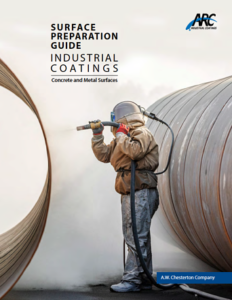
The oil and gas industry has long been at the forefront of the adoption of high temperature coatings to prevent internal corrosion of process vessels and other equipment operating at above ambient temperatures.
Highly corrosive conditions

The most obvious reason for the industry’s advancement in coatings is the corrosive conditions that prevail at so many stages of oil and gas production. Severe corrosion can affect equipment from upstream production facilities to downstream refineries. These corrosion mechanisms are mainly caused by aqueous bases, high levels of chlorides and also corrosive atmospheres such as hydrogen sulphide and carbon dioxide. These conditions cause severe corrosion to many metals and alloys. Protective coatings based on organic polymers can provide very good long-term resistance in many applications.
Oil and gas companies are very knowledgeable about corrosion prevention and have accumulated a lot of experience over the decades. Therefore, they generally know which technologies work under certain conditions and which do not. But new market changes are creating challenges for oil and gas companies and coating manufacturers.
New challenges and higher temperatures

As oil and gas reserves decline, the industry is forced to explore and extract deeper and deeper fields and to produce fluids with much higher levels of corrosives than in the past. In turn, this has led to an increase in the processing temperatures and pressures required to produce fuels that meet acceptable specifications.
To keep pace, the protective coatings industry has had to develop new and improved organic polymer coatings capable of withstanding the higher operating temperatures and increasingly corrosive conditions. Chesterton/ARC offers a range of high-temperature coatings that meet a multitude of extreme exposures.
The oil and gas industry also operates a great deal of older process equipment designed and manufactured from materials suitable for conditions that no longer exist today. This equipment must either be replaced at considerable cost or upgraded with protective polymer coatings or a coating of a more corrosion resistant metal or alloy.
Testing and acceptance of new high temperature coating technologies

One of the challenges facing manufacturers of protective coatings is convincing major oil and gas producers that new coatings that withstand higher temperatures can withstand these more aggressive operating conditions. For oil and gas companies, the stakes are clearly high. A coating failure in a process environment that could bring a production platform to a halt can cost the operator millions of euros/dollars in lost production. Safety is another key criterion, particularly in the selection of any material used either offshore or in a refinery. All new materials and technologies must be thoroughly tested and proven before corrosion engineers will allow their use.
Most major multinational oil and gas companies maintain their own lists of qualified and specified coatings that have passed laboratory testing and/or feedback in the field. Often, laboratory testing must be carried out by independent third party laboratories using standardised test methods. However, many operators have their own unique testing requirements that must be performed for a coating to be listed in their specifications. As a result, several independent laboratory tests must be performed to meet the requirements of all the world’s oil and gas companies. This increases the expense of developing new materials and increases the development time to bring new tested coatings to market.
While there may be valid reasons why oil and gas companies require some differences in the product tests to be performed by coatings manufacturers, achieving a more common consensus on testing could allow coatings manufacturers to develop new technologies more quickly and invest in more R&D.
New developments in coatings and how they work

There are two main types of polymers that are mainly used for the internal lining of vessels and equipment subject to aqueous corrosion at high temperatures and pressures:
- Epoxy polymers
- Vinyl ester polymers
Although these types of polymers have been used as protective coatings for decades, recent advances in these technologies have enabled manufacturers to produce coatings capable of withstanding much higher immersion temperatures under severe corrosive conditions.
These advances have been made possible by the development of polymers that have much higher glass transition temperatures (Tg) than older, traditional epoxy or vinylester polymers. Whereas older technologies were capable of achieving Tg’s in the 50-60°C range, these new high temperature polymers (such as those used in the ARC S5 high temperature coating – AW Chesterton’s most recent development) have Tg’s up to 210°C, allowing continuous immersion at temperatures up to 180°C.
Protective coatings based on vinyl ester polymers have also made progress in recent years in terms of ultimate Tg capabilities. However, the use of vinyl ester coatings has declined in the oil and gas industry due to the more hazardous nature of these coatings during application.
High temperature coatings are typically used on equipment handling aqueous process fluids, where aqueous corrosion is a problem. Application areas include separation vessels, heat exchangers and coolers, coalescing filters, air flare lines, pipes and pipe coils, pumps, valves and a wide range of other equipment.
Partnerships will bring new technologies to the market faster
Looking to the future, it is certain that the oil and gas industry will face new challenges that will require new solutions, particularly in the area of corrosion protection in high temperature environments. Protective coatings manufacturers such as AW Chesterton are ready to meet these challenges and look forward to partnering with the oil and gas industry to bring new technologies to market faster and facilitate their adoption and acceptance.

Learn more about proper surface preparation for successful coatings.
More about the author Nick Wilson
